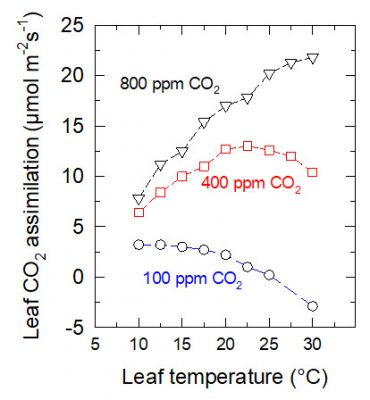Quote:
Originally Posted by redpoint5

It appears that vitamin D production is so vital that trading off UV protection for increasing vitamin production occurs whenever sufficient avoidance of UV light can be achieved. As the world increasingly has access to sufficient shelter and UV protection, biological adaptation will spend less resources on creation of UV protection.
There's only evidence for the exact opposite of this.


- Historically the calories per capita have increased over time
- Humans construct "greenhouses" because it's insufficiently warm for plant growth
- The earth has increasingly greened both from having a higher CO2 concentration (plant food) and greater warmth (supports photosynthesis)
- Photosynthesis doesn't occur below freezing
- The optimal temperature for photosynthesis increases as the concentration of CO2 increases
" Low Temperature
Enzymes are protein molecules used by living organisms to carry out biochemical reactions. The proteins are folded into a very particular shape, and this allows them to bind efficiently to the molecules of interest. At low temperatures, between 32 and 50 degrees Fahrenheit – 0 and 10 degrees Celsius – the enzymes that carry out photosynthesis do not work efficiently, and this decreases the photosynthetic rate. This leads to a decrease in glucose production and will result in stunted growth.
Medium Temperatures
At medium temperatures, between 50 and 68 degrees Fahrenheit, or 10 and 20 degrees Celsius, the photosynthetic enzymes work at their optimum levels, so photosynthesis rates gauge high.
High Temperatures
At temperatures above 68 degrees Fahrenheit, or 20 degrees Celsius, the rate of photosynthesis decreases because the enzymes do not work as efficiently at this temperature. This is despite the increase of carbon dioxide diffusion into leaves. At a temperature above 104 degrees Fahrenheit – 40 degrees Celsius – the enzymes that carry out photosynthesis lose their shape and functionality, and the photosynthetic rate declines rapidly."
The global average temperature is 55 degrees, at the lower end of optimal growing temperature.
https://www.encyclopedie-environneme...hotosynthesis/ |
1) The UN data on 'available' calories per capita has nothing to do with crop yields. It has to do with making available, the logistics which enable food to be delivered to those at risk of starvation, like today in Gaza, Sudan, 'Texas', etc..
2) 'Calories' have nothing to do with 'nutrition' either.
3) Your own data clearly mentions decreased photosynthesis as a function of outdoor temperature, and 104-F clearly stands out in that data.
4) That data completely misses the point that, beyond 104F, the 'stomata' of the plant's leaves 'close' completely, arresting gas exchange, to and from the atmosphere; in and out of the plant, as a 'survival' mechanism.
5) Increased CO2 does not necessarily increase plant growth.
6) Photosynthesis occurs blow freezing underneath polar sea ice, beginning the entire marine food web, which is collapsing due to global warming.
7) According to the Rhodium Group, global food production is in decline, as of April 22, 2024 reporting on PBS ( this info was 'purchased' from Rhodium, and is not freely available ).
8) Earth's global mean average temperatures, as of 1900, was 56.58F.
9) As of 2006, Earth's global mean average temp. was 57.99 F.
10) A couple months ago, Earth hit 60.18F ( the IPCC's 2C target the scientists hoped we'd never reach! )
Your data trails off as of 2013. A 'lot' has happened on Earth since 2013. That's 'WHY' there's so much concern about our 'NON-LINEAR' climate change.